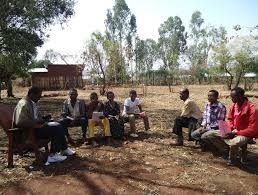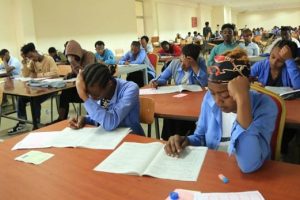
Meteorologist call drought a “creeping disaster” for the reason it is a more gradual phenomenon and its wide-ranging disastrous (economic, social, and environmental) effects are not felt at once; but it may last for a long period of time; even after the end of the drought episode.
Because it develops slowly, its existence, in more cases, is left unrecognized. Due to this, the degree of its severity in terms of environmental and socio-economic activities, mainly on agriculture, forestry, hydroelectric energy among others is more devastating than other natural disasters.
In fact, as documents indicate, in the past four decades, drought has affected more people around the world than any other type of natural disaster. Ethiopia has also experienced the adverse impacts of recurrent droughts. This recurrent phenomenon has cost the country hugely.
Currently, the Somali State has been severely affected by the drought came to happen in most parts of the State. Lack of rain for the past couple of months has compelled more than thousands of state’s pastoralists to displacement, and dozens of animals to death.
To address that challenge, save the lives of the people and to rehabilitate the drought affected society, the Ethiopian government joining hands with state government and partners have been working vigilantly to deliver effective and efficient humanitarian assistance for the targeted group.
Jumping on the bandwagon, various states of the country, development partners, nongovernmental organizations (NGOs), and individuals, among others are also exerting utmost effort in supporting the needy. They have been extending a helping hand and delivering financial and in-kind supports to the Somali State including foods for the displaced people and fodder for animals.
Recently, the International Rescue Committee (IRC) has launched a 2.5 million USD life-saving Water, Sanitation, and Health Program for drought affected and at-risk communities in the Somali State.
In its press release sent to The Ethiopian Herald the IRC announced that it is launching a 2.5 million USD project to support drought affected communities in Shebele, Afder, Fafan, and Dollo Zones Somali State where over 2 million people are impacted by the drought.
Currently, more than six million people in Ethiopia are facing extreme hunger due to drought caused by four seasons of inadequate rainfall and failed crops.
As it is learnt, the project is financed by European Civil Protection and Humanitarian Aid (ECHO) and Bureau for Humanitarian Assistance (BHA) and implemented by IRC supporting over 30,000 people in the State.
As per the Dec 2021, IRCs Multi sector assessment report, 57,687 people in Shebelle and 203,641 people in Afder require water trucking. In response to these needs, the IRC emergency team deployed five water trucks for the last three months in the prioritized kebeles of the two woredas of drought-affected communities. “Water trucking was prioritized for 20 drought affected kebeles in Shebelle and Afder Zones,” the statement indicated.
Currently, the IRC is providing 100,000 litters of water per day as well as products to purify undrinkable water sources for consumption.
What is more, technical training was given to water monitoring experts to ensure the residual chlorine is within the range of the World Health Organization (WHO) recommendation of 0.5 mg/ liters and to monitor the quantity and quality of water delivered to the targeted sites.
The IRC also rehabilitated two strategic water supply services through the supply and installation of pumps, generators, pipes, and storage tanks and maintenance of water collection points. The two boreholes are in Tuliguled woreda (Jidile kebele), Fafan Zone, and Danod woreda (Shaxda Buhodle kebele) Doolo zone. The boreholes have since become functional and are now serving the drought-affected communities, responding to water access to 10,000 people.
Through this funding, the IRC is also assisting 450 drought-affected households with cash grants until June 2022.
In addition, the International Rescue Committee is also committing 2.5 million USD to respond to the most urgent humanitarian needs in south eastern Ethiopia. These funds will support the maintenance and expansion of IRC’s on-going drought response. The IRC also calls on the international community to prioritize funding for drought response in Ethiopia to avert further suffering and displacement.
According to the Committee, extremely poor rainfall during the October to December 2021 dry season in southern and south eastern pastoral areas was preceded by two consecutive poor seasons in late 2020 and early 2021, and the compounding impacts are limiting pasture and water availability.
As to the statement, unusually dry conditions have resulted in extremely poor livestock conditions across much of the State, notably for less drought-tolerant livestock such as cattle. High levels of atypical livestock migration and large-scale livestock deaths have been observed in the area.
In a recent interview with local media, Mitiku Kassa, Commissioner for the National Disaster Risk Management of Ethiopia (NDRMC), said that the Ethiopian Government is working persistently to respond to humanitarian efforts, address and overcome the challenge stepping up efforts, especially in areas that are affected by La Niña induced drought in the eastern and southern parts of the country.
As to him, “Efforts are underway to ensure adequate supplies of food and non-food items in drought affected states, and the National Disaster Risk Management is already engaged in various activities through establishing a number of ways to boost effective and efficient delivery of humanitarian assistance.”
He said that the provision of food, water, nutrition, and livelihood protection programs, including water-trucking, feed supply are well underway.
The government is also working closely with international partners to avail humanitarian assistance to all the needy people in various parts of the country, he said.
According to him, this year’s La Niña induced drought has impacted more than 6.4 million people in the eastern and southern parts of Ethiopia, covering a wide geographic area and a wider population.
The provision of food and non-food items has been well underway in the drought-affected places, Mitiku said, adding that the assistance will continue until their lives are restored back to normal.
Vulnerable groups, especially lactating mothers, children, people with disabilities, and the elderly are getting priority, he added.
According to him, the non-food assistance includes water trucking and supply, health services, fodder for livestock, veterinary services for livestock, vaccination, digging emergency boreholes.
In a bid to save a large number of livestock, animal feed has been provided to breading stocks. Concurrently, producing livestock feeds that can be matured within 45 days is also well underway.
Selling livestock to traders and abattoirs as well as buying weak animals from pastoralists for the purpose of getting dried meat to food assistance to the needy is also one form of intervention being underway, he said.
The start of the rainy season will improve the situation, he said.
The government and partners should work very hard to optimize and save water and forage use to withstand the effects of the drought, he underscored.
BY TEWODROS KASSA
THE ETHIOPIAN HERALD SUNDAY EDITION 10 APRIL 2022





